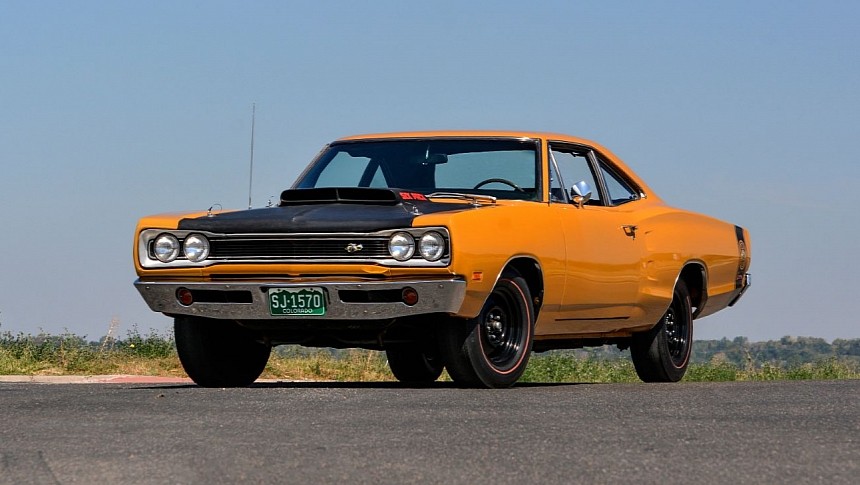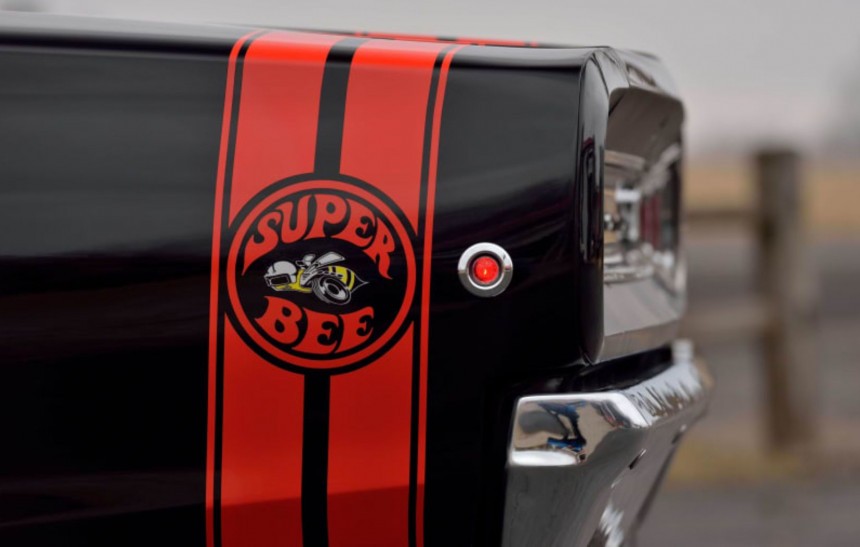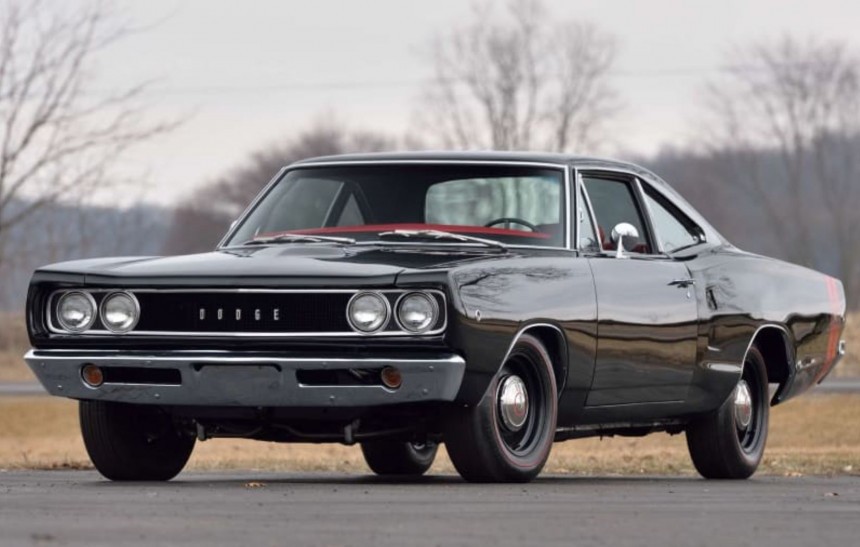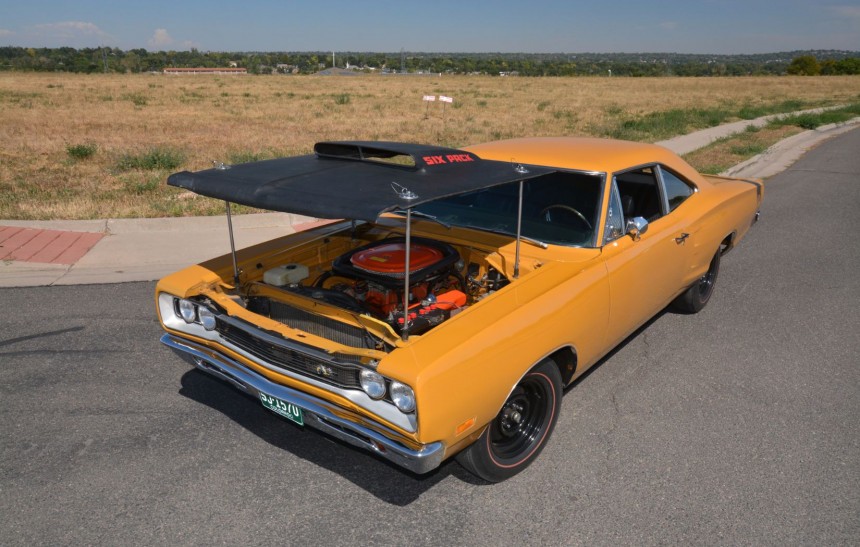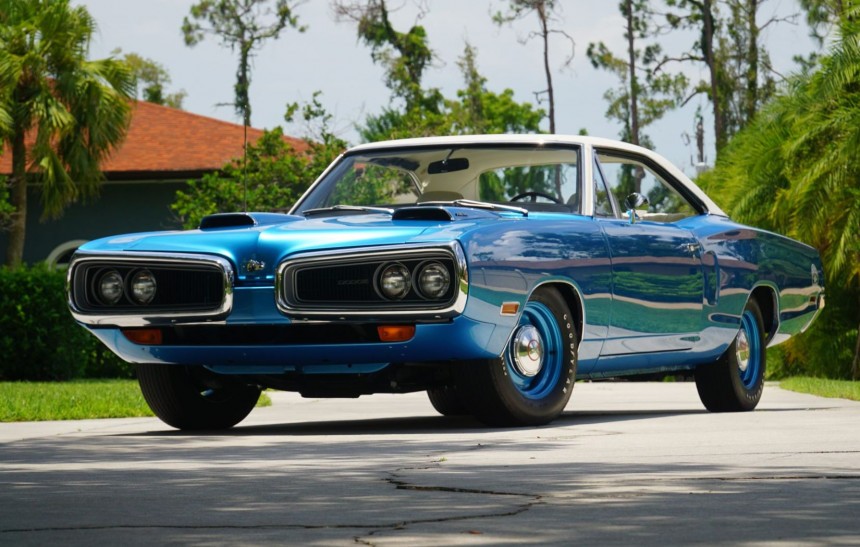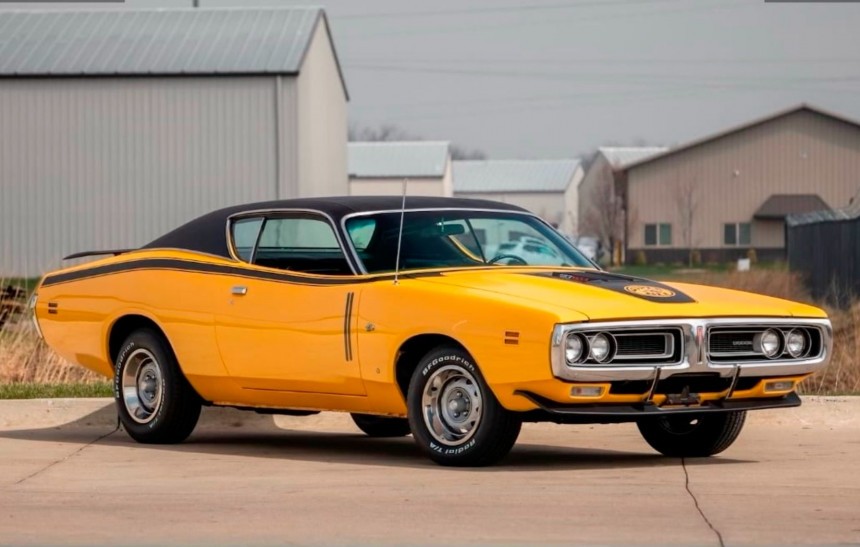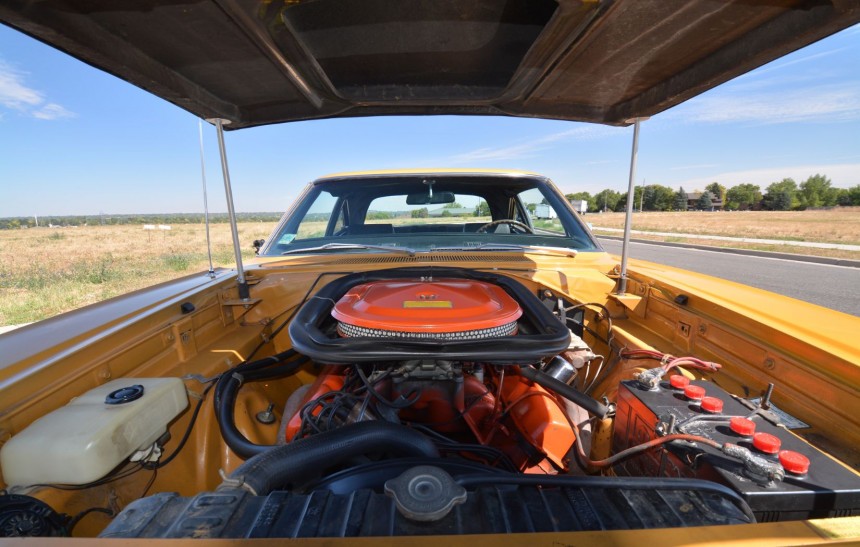Overshadowed by the Plymouth Road Runner during its three-year production run, the Super Bee remains an underated beast from the golden era of muscle cars.
After the Chrysler Corporation introduced the NASCAR-bound 426 HEMI V8 in its brands' production models, those cars started to rule the streets and the drag strips.
But while Chrysler had the edge over its rivals when it came to the highest-performing models, the corporation was losing the battle at the other end of the muscle car spectrum towards the end of the 1960s.
To solve this problem, the Dodge and Plymouth were each tasked with creating an affordable intermediate, and for the first time, the divisions were let loose to compete directly against each other.
While Plymouth cooked up the Road Runner on the backbones of the B-platform Belvedere, Dodge used the same recipe and turned the Coronet pillared coupe into the Super Bee, which resulted in a similar car - albeit with an inch-longer (25 mm) wheelbase.
Compared to its main rival, the Super Bee came with minor exterior differences, like a matte black front grille, larger rear wheel wells, and, of course, the unique set of bumble bee racing strips. a
Inside, it featured door-to-door carpeting, vinyl-upholstered seats, and door panels, just like the Road Runner.
However, unlike the Road Runner, it came with upgrades like a Hurst Competition Plus shifter and linkage (for the optional 4-speed manual cars), as well as a Rallye gauge package borrowed from the Charger.
Adding these features resulted in a base price of $3,027, making the Superbee $131 more expensive than the Road Runner.
As standard, the Super Bee came with a 335-hp four barrel 383-ci (6.3-liter) Magnum V8 equipped with the cylinder heads, camshaft, and induction system from the larger 440.
The budget-friendly model also came with heavy-duty suspension and drum brakes.
However, premium features like front disc brakes, air conditioning, or cruise control were not even on the options list, presumably to keep costs at a minimum.
Curiously, Dodge did include the mighty 426 HEMI on the options list, but by adding nearly $1,000 to the base price, it defied the whole purpose of delivering a budget-friendly muscle car.
Nevertheless, Dodge managed to sell 125 units of the HEMI-powered Super Bee during the 1968 model year, in addition to around 7,700 standard models.
Since the Road Runner outsold the Super Bee by a large margin in 1968, Dodge had to make its budget-friendly muscle car much more appealing for the 1969 model year.
Now available as a two-door hard top in addition to the pillared coupe, the revised Super Bee still came with the 383 Magnum as standard, but mid-model year, the exciting 440 Six Pack V8 joined the HEMI on the optional engine list.
Nearly twice as cheap as the Elephant, the new 440-ci (7.2-liter) powerplant was rated at a healthy 390 hp and 490 lb-ft (664 Nm) of torque.
Furthermore, this option also added a HEMI-grade suspension setup, a Dana 60 axle with a 4:10 gearing, a heavy-duty automatic transmission or a 4-speed manual, and an awesome mate black "lift off" fiberglass hood ornated with one of the biggest scoops on the market.
Thanks to these additions, sales of the Super Bee went up to around 26,000 units in 1969. Of those, 1,907 were Six Packs, and 166 hid the 426 HEMI under their hoods.
Emboldened by the sales success of 1969 but still losing the war against the Road Runner, Dodge tweaked the Super Bee's looks again for the 1970 model year.
Like the Coronet, the budget-friendly muscle car received a new two-piece front grille that was supposed to resemble bumble bee wings but ended up making the models look weird in the eyes of most potential buyers.
Though the engine options and scooped hood were carried over from the 1969 model, rising insurance premiums and questionable front-end design had a negative impact on sales, which dropped to 15,506 units.
Despite low sales, rising insurance rates, and a looming fuel crisis, Dodge continued to offer the a in 1971.
Still an affordable muscle car, the model joined the Charger lineup as its lowest-cost offering.
In the new Charger guise, the Super Bee received a new entry-level engine in the shape of a 275-hp 340-ci (5.6-liter) V8 - the first and only small block fitted into the model's engine bay.
The engine lineup was the same as in the previous model years, with the 383 being detuned to 300 ponies.
Despite the switch to the flashy, new Charger body, sales of the Super Bee continued to drop. With total figures narrowly exceeding 5,000 units, Dodge ultimately discontinued the model.
Except for the 1969 model year, the Super Bee never rose to expectations in terms of sales. Plymouth did a far better job with its Road Runner, beating Dodge by a humongous margin year after year.
After it was discontinued, the Super Bee became known as Mopar's other budget-friendly muscle car - a reputation it still struggles to shake off.
But, while not as glamorous as its Mopar siblings from the golden era, the Super Bee is the perfect choice for those who want a classic muscle car that doesn't cost a fortune.
According to classic.com, the average value for a 1968 or 1971 example in great shape currently stands around $64,000. The most expensive Super Bees are the 1969s, selling, on average, for $85,000, while the 1970 models can be had for around $68,000.
Of course, expect to pay more for a 440 Six Pack-equipped car or one of the rare HEMI-powered ones.
But, despite their rarity, the ultra-rare Elephant-packing Super Bees are, in some cases, the cheapest classic 426 HEMI Mopars available.
These cars rarely pop up at auctions, but when they do, some fetch under $100,000. Of course, highly original, low-mileage survivors in pristine shape can go for much more.
In the YouTube video below by Matt Maran Motoring, you can watch a detailed review of the 1969 Super Bee Six Pack - one of the coolest members of the iconic nameplate.
But while Chrysler had the edge over its rivals when it came to the highest-performing models, the corporation was losing the battle at the other end of the muscle car spectrum towards the end of the 1960s.
To solve this problem, the Dodge and Plymouth were each tasked with creating an affordable intermediate, and for the first time, the divisions were let loose to compete directly against each other.
The birth of the Super Bee
Compared to its main rival, the Super Bee came with minor exterior differences, like a matte black front grille, larger rear wheel wells, and, of course, the unique set of bumble bee racing strips. a
Inside, it featured door-to-door carpeting, vinyl-upholstered seats, and door panels, just like the Road Runner.
However, unlike the Road Runner, it came with upgrades like a Hurst Competition Plus shifter and linkage (for the optional 4-speed manual cars), as well as a Rallye gauge package borrowed from the Charger.
Adding these features resulted in a base price of $3,027, making the Superbee $131 more expensive than the Road Runner.
A potent standard engine and a surprising addition to the options list
The budget-friendly model also came with heavy-duty suspension and drum brakes.
However, premium features like front disc brakes, air conditioning, or cruise control were not even on the options list, presumably to keep costs at a minimum.
Curiously, Dodge did include the mighty 426 HEMI on the options list, but by adding nearly $1,000 to the base price, it defied the whole purpose of delivering a budget-friendly muscle car.
Nevertheless, Dodge managed to sell 125 units of the HEMI-powered Super Bee during the 1968 model year, in addition to around 7,700 standard models.
A major improvement
Now available as a two-door hard top in addition to the pillared coupe, the revised Super Bee still came with the 383 Magnum as standard, but mid-model year, the exciting 440 Six Pack V8 joined the HEMI on the optional engine list.
Nearly twice as cheap as the Elephant, the new 440-ci (7.2-liter) powerplant was rated at a healthy 390 hp and 490 lb-ft (664 Nm) of torque.
Furthermore, this option also added a HEMI-grade suspension setup, a Dana 60 axle with a 4:10 gearing, a heavy-duty automatic transmission or a 4-speed manual, and an awesome mate black "lift off" fiberglass hood ornated with one of the biggest scoops on the market.
Thanks to these additions, sales of the Super Bee went up to around 26,000 units in 1969. Of those, 1,907 were Six Packs, and 166 hid the 426 HEMI under their hoods.
Another less successful redesign
Like the Coronet, the budget-friendly muscle car received a new two-piece front grille that was supposed to resemble bumble bee wings but ended up making the models look weird in the eyes of most potential buyers.
Though the engine options and scooped hood were carried over from the 1969 model, rising insurance premiums and questionable front-end design had a negative impact on sales, which dropped to 15,506 units.
Switching to the Charger platform
Still an affordable muscle car, the model joined the Charger lineup as its lowest-cost offering.
In the new Charger guise, the Super Bee received a new entry-level engine in the shape of a 275-hp 340-ci (5.6-liter) V8 - the first and only small block fitted into the model's engine bay.
The engine lineup was the same as in the previous model years, with the 383 being detuned to 300 ponies.
Despite the switch to the flashy, new Charger body, sales of the Super Bee continued to drop. With total figures narrowly exceeding 5,000 units, Dodge ultimately discontinued the model.
It is still reasonably priced compared to its classic Mopar siblings
After it was discontinued, the Super Bee became known as Mopar's other budget-friendly muscle car - a reputation it still struggles to shake off.
But, while not as glamorous as its Mopar siblings from the golden era, the Super Bee is the perfect choice for those who want a classic muscle car that doesn't cost a fortune.
According to classic.com, the average value for a 1968 or 1971 example in great shape currently stands around $64,000. The most expensive Super Bees are the 1969s, selling, on average, for $85,000, while the 1970 models can be had for around $68,000.
Of course, expect to pay more for a 440 Six Pack-equipped car or one of the rare HEMI-powered ones.
But, despite their rarity, the ultra-rare Elephant-packing Super Bees are, in some cases, the cheapest classic 426 HEMI Mopars available.
These cars rarely pop up at auctions, but when they do, some fetch under $100,000. Of course, highly original, low-mileage survivors in pristine shape can go for much more.
In the YouTube video below by Matt Maran Motoring, you can watch a detailed review of the 1969 Super Bee Six Pack - one of the coolest members of the iconic nameplate.
